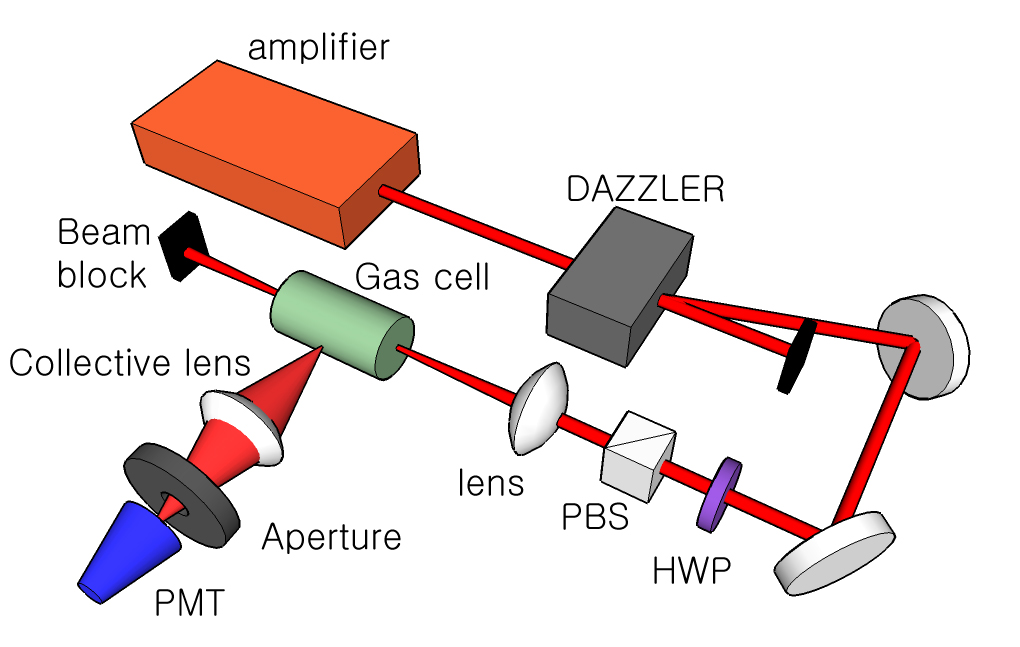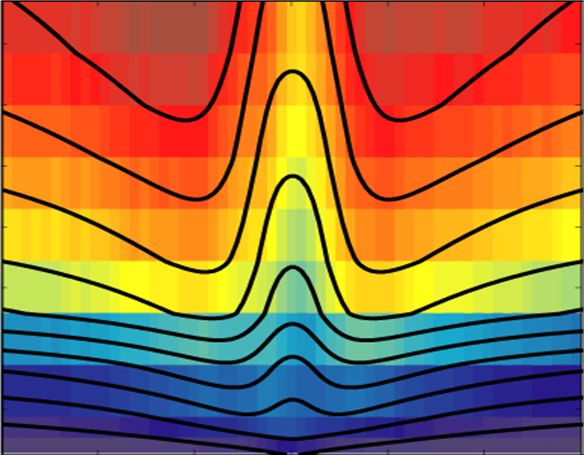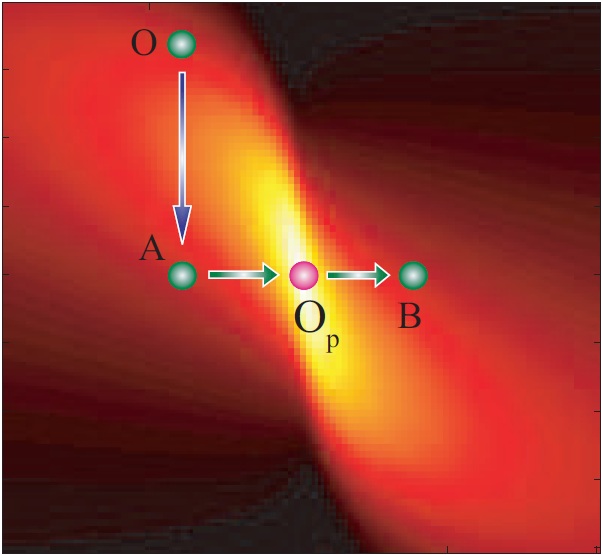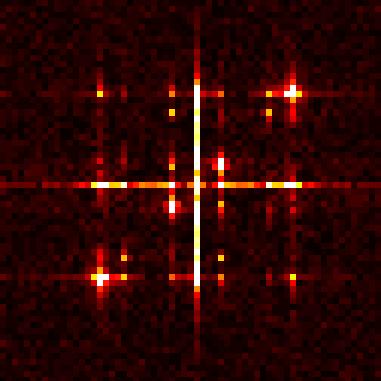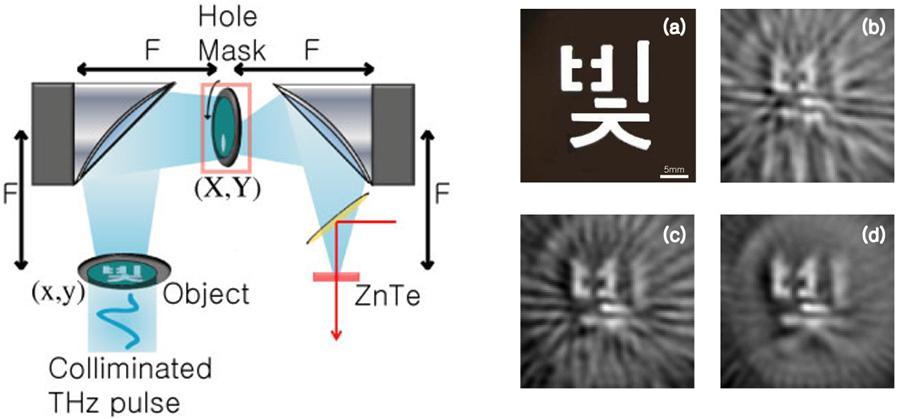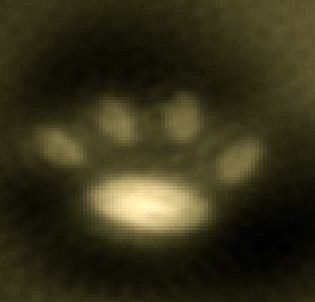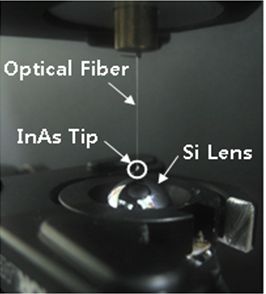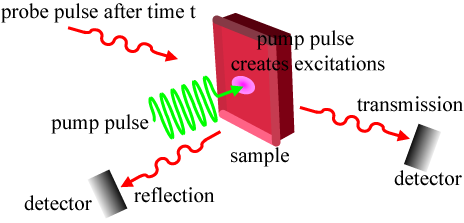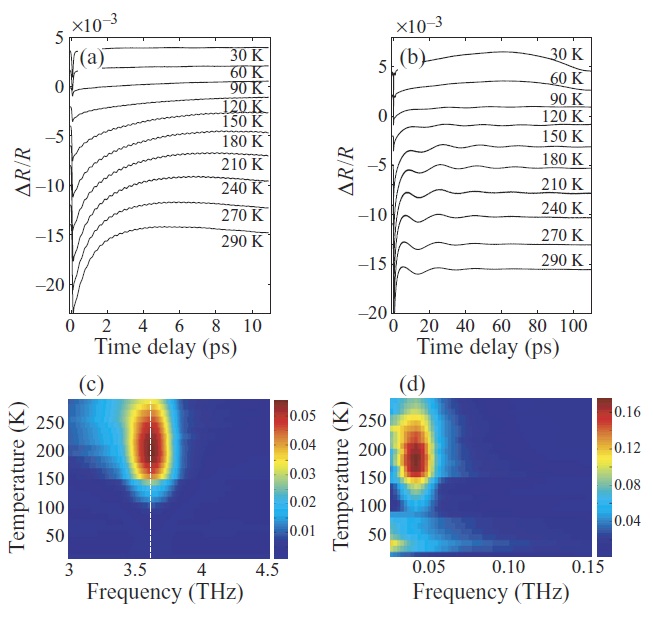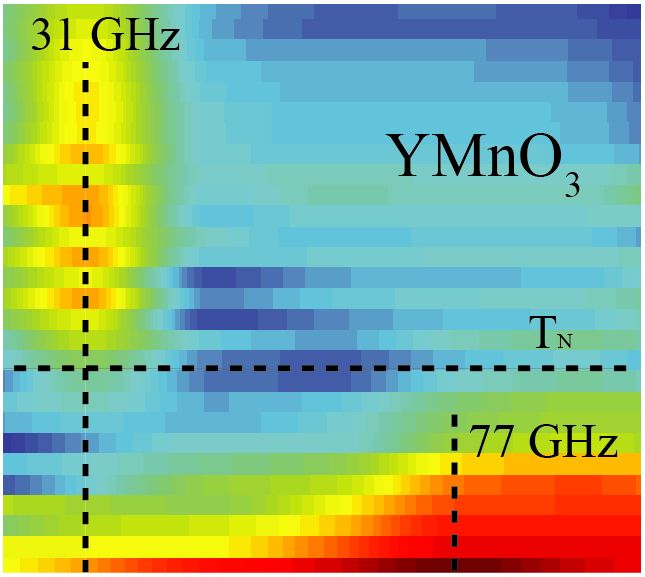Korean version
개요
펨토초 레이져기술이 발전함에 따라 초고속 사이언스는 현대과학에서 중요한 이슈가 되었습니다. 저희랩에서는 이러한 기술을 이용하여 초고속 광학 제어를 연구하며 특히 양자 시스템에서의 결맞음 제어, 분광학 및 이미징을 위한 테라헤르츠파 제어, 펨토초 시간 분해능을 갖는 제어 및 측정을 연구하고 있습니다.
저희 랩은 펄스 쉐이핑 기술을 사용하여 양자적 시스템인 원자에서의 결맞음 제어를 수행합니다. 저희는 이미 2 레벨 시스템과 3 레벨 레더 시스템, 3레벨 v자 시스템에 대해 결맞음 제어 기술들을 발전시켰습니다. 분자 혹은 고체등의 좀 더 복잡한 양자 시스템에서의 결맞음 제어, 혹은 테라헤르츠 파를 이용한 양자 제어 개발이 앞으로의 목적입니다.
테라헤르츠파 제어 역시 저희 연구실의 커다란 관심사입니다. 이는 아래서 설명할 테라헤르츠 파가 갖는 여러 장점들 때문인데요. 특히 저희는 초고속 레이져를 이용한 테라헤르츠 시분해 분광에서의 테라헤르츠 제어를 연구 개발 하고 있습니다. 이러한 기술들은 그자체로도 의미있지만 저희의 다른 연구에서도 사용할 계획입니다.
저희는 또한 물질의 초고속 분광학도 연구합니다. 이를 위해 저희는 펨토초 시간 분해능을 갖는 광학 제어 및 측정을 수행합니다. 현재 저희는 LuMnO3와 같은 다강체 물질을 연구하고 있습니다.
양자 제어
초고속 레이져 펄스는 재단됨에 따라 양자 시스템에 다른 영향을 주며 따라서 빛과 물질의 상호작용에 따라 그 양자 과정 자체를 제어할 수 있습니다. 우리는 프로그램된 음향광학 주파수 필터(Dazzler)이용하여 초고속 레이져를 재단하여 양자 시스템을 제어하고 있습니다.
Results
Strong-field two-photon absorption in atomic cesium: an analytical control approach
We have considered an analytical control of two-photon absorption
process of atoms in the strong-field interaction regime. The experiment
was performed on gaseous cesium atoms strongly interacting with a
shaped laser-pulse from a femtosecond laser amplifier and a programmable
pulse-shaper. When this shaped laser-pulse transfers the atomic population
from the 6s ground state to the 8s excited state, we have found that both
positively- and negatively-chirped laser pulses, compared with a Gaussian
pulse, enhance this excitation in the strong-field regime of laser-atom
interaction. This unusual phenomena is explained because the temporal
shape of the laser intensity compensates the effect of dynamic Stark shift for
the two-photon resonant condition to be optimally maintained. We provide
analytic calculations using the strong-field phase matching, which show
good agreement with the experiment.
27 April 2009 / Vol. 17, No. 9 / OPTICS EXPRESS 7648
Strong-Field two-photon transition by phase shaping
We demonstrate the ultrafast coherent control of a non-linear two-photon absorption in a dy-
namically shifted energy level structure. We use a spectro-temporal laser pulse shaping that is
programmed to preserve the resonant absorption condition during the intense laser field interaction.
Experiments carried out in the strong-field regime of two-photon absorption in the ground state
of atomic Cesium reveal that the analytically obtained o®set and curvature of a laser spectrum
compensate the effect of both static and dynamic energy shifts of the given light-atom interaction.
PRA accepted Tuesday Jul 20, 2010
Coherent Control in 2D-FTES
We demonstrate the advantage of applying coherent control technique to 2D-FTES spectroscopy. By shaping individual pulses used in 2D-FTES on atomic model system, we selectively turn on and off specific couplings. This advanced 2D-FTES technique may be useful for probing time-dependent coupling paths among multilevel electronic energy states in complex systems
테라헤르츠파 제어
The significance in the electromagnetic waves in the recently available frequency range of 0.1 ~ 10 THz, or terahertz (THz) wave has been progressively increasing. For example, their applications in communications, material characterizations, biological and medical imaging, and precision spectroscopy of molecules are expected. Spetially, THz time domain spectroscopy (THz-TDS) has become generally adopted for the measurement of optical properties of materials in the THz frequency range. we have developed active control device in THz-TDS for imaging and spectroscopy.
Results
THz coherent optical computer
Single point terahertz imagery of 2D objects is demonstrated by exploiting the broadband nature of ultrafast terahertz wave in a coherent optical computing setup. In the devised imagery, a collimated terahertz beam is illuminated on an object and the scattered fields are measured through a spatial mask at the Fourier plane in a 4-f terahertz time-domain spectroscope. This arrangement allows conversion of radial spatial frequencies of the object to the temporal spectrum of the pulse. Hence, a 2D image stored in the terahertz waveforms can be readily obtained.
Optics Letters, Vol. 35, Issue 4, pp. 508-510 (2010)
single-pixel coherent diffraction imaging
We demonstrate single-pixel coherent diffraction imaging, whereby broadband terahertz (THz) waveforms passed through a slated phase retarder (SPR), diffracted from an object, were measured by a THz detector located in the far field. For 1D imaging, the fixed-location single-pixel broadband detector simultaneously measured all the spatial frequency components of the object because the frequency components of the source maintain a one-to-one correspondence with the object's spatial frequency. For 2D imaging, the angular position of the SPR enabled the diffracted THz wave to carry an angular projection image of the object. Thirty waveforms measured at different SPR orientations successfully reconstructed complex 2D images.
Terahertz Waves Emitted from an Optical Fiber
We report a simple method of creating terahertz waves by applying the photo-Dember effect in a (100)-oriented InAs film coated onto the 45-degree wedged-end facet of an optical fiber. The terahertz waves are generated by infrared pulses guided through the optical fiber which is nearly in contact with a sample and then measured by a conventional photo-conductive antenna detector. Using this alignment-free terahertz source, we performed proof-of-principle experiments of terahertz timedomain spectroscopy and near-field terahertz microscopy. We obtained a bandwidth of 2 THz and 180-mm spatial resolution. Using this method, the THz imaging resolution is expected to be reduced to the size of the optical fiber core. Applications of this device can be extended to sub-wavelength terahertz spectroscopic imaging, miniaturized terahertz system design, and remote sensing.
21 June 2010 / Vol. 18, No. 13 / OPTICS EXPRESS 13693
초고속 제어 및 측정
Time-resloved pump-probe experiment is a useful tool in studying the dynamics related to electrons, phonons, and spin. The basic analogy of IR pump-probe method is simple that a powerful light pulse, usulally labeled the 'pump pulse' of 'excitation pulse', interacts with the sample and excites it into a non-equilibrium state. The sample thereafter relaxes towards a new equilibrium state. This process can be mapped by sending a second much weaker pulse, 'probe pulse', onto a sample. The 'probe pulse' detects a change of optical properties without disturbing the object under investigation.
Our research of ultrafast phenomena is investigations non-equilibrium states of electron, phonon, and spins in correlated electron materials, especillay we are interested in rare-earth manganites.
Results
Ultrafast IR spectroscopic study of coherent phonons and dynamic spin–lattice coupling in multiferroic LuMnO3
The concurrent existence of ferroelectricity and magnetism within
a single crystalline system characterizes the multiferroic materials discovered
in recent years. To understand and develop the multiferroic phenomenon, we
need to investigate the unusual coupling between spin and lattice degrees of
freedom. Spins in multiferroics are expected to be elastically coupled to phonons.
Therefore, the time-dependent study can be a crucial factor in understanding
the coupled dynamics. Here, we report the observations of strong dynamic
spin–lattice coupling in multiferroic LuMnO3. A coherent optical phonon of
3.6 THz and its temperature dependence is measured for the first time from our
femtosecond IR pump and probe spectroscopy. Also, we observed a coherent
acoustic phonon of 47 GHz similar to a previous report (Lim et al 2003 Appl.
Phys. Lett. 83 4800). Temperature-dependent measurements show that both
optical and acoustic phonons become significantly underdamped as temperature decreases to TN, and they disappear below TN. These observations reveal that
phonons are coupled to spins by magneto-elastic coupling, and the disappearance
of phonon modes at TN is consistent with the isostructural coupling scheme
suggested by Lee et al (2008 Nature 451 805).
New Journal of Physics 12 (2010) 023017
Ultrafast near-infrared spectroscopic study of coherent phonons in the phase-separated manganite La1/4Pr3/8Ca3/8MnO3
We report the generation of coherent optical and acoustic phonons in mixed valent manganite
La1/4Pr3/8Ca3/8MnO3 using femtosecond infrared pump-probe spectroscopy. Temperature-dependent measurements
of the time-resolved optical reflectance, obtained over a range of 5–300 K, revealed that the energy of
the photoexcited electrons dissipated during relaxation to acoustic phonons, in the high-temperature paramagnetic
phase, and to optical phonons, in the low-temperature charge-ordering phase. Analysis of the temperaturedependent
behavior reveals that the modal amplitudes of the coherent phonons appear strongly correlated with
the charge-ordering phase.
Phys. Rev. B 81, 214416 (2010)
Strong spin-lattice coupling in multiferroic hexagonal manganite YMnO3 probed by ultrafast optical spectroscopy
We report the observation of spin-lattice coupling in multiferroic YMnO3 by femtosecond near-infrared pump and probe spectroscopy. A coherent 31~GHz acoustic phonon was detected above the magnetic ordering temperature, and a higher frequency coherent mode was observed in the anti-ferromagnetic phase. This temperature-dependent measurement demonstrates that the acoustic phonon excitation is coupled to spin ordering.
